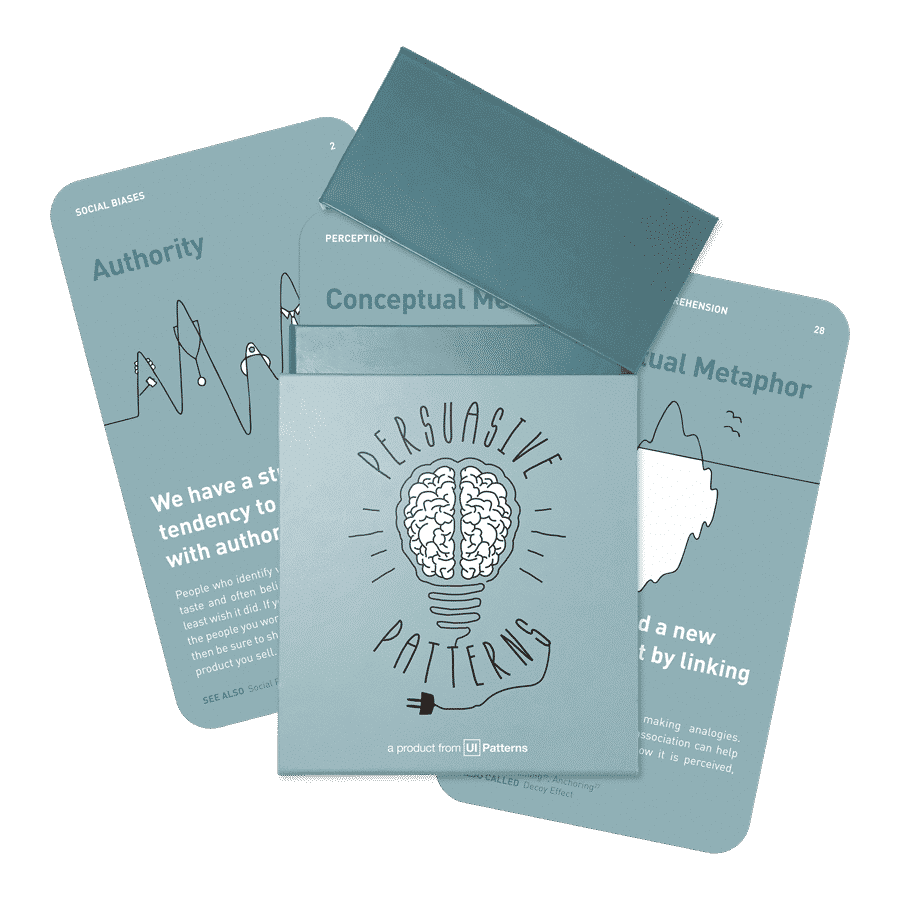Persuasion vs Manipulation
Navigating the fine line between persuasive and ethical design.
Turn insights into action with the Persuasive Patterns card deck
Master the science behind user motivation and create products that drive behavior.
Get your deck!As digital product designers, we walk a fine line between persuading users to take action and ensuring that our designs remain ethical. When teaching product psychology, the number one question asked is:
“What, according to you, is the line between persuasive design and ethical design?”
This question highlights the challenge many designers face when creating persuasive products. Persuasion can be a powerful tool to influence user behavior, but where does it stop being helpful and start becoming manipulative? When I respond, I try to clarify that this boundary is shaped by the designer’s intent and transparency. Here’s how I break it down:

Persuasion itself is not inherently unethical; it is a method of guiding users towards making decisions, often in their best interest. However, when persuasion is used in ways that prioritize business goals over user well-being, it crosses the line into manipulation. For instance, dark patterns like making it unnecessarily difficult to unsubscribe from a service or hiding vital information in confusing UI elements are examples of manipulative practices that betray user trust.
On the flip side, ethical persuasive design focuses on helping users make informed decisions by presenting clear and transparent options. Ethical persuasion respects the autonomy of users and supports them in achieving their own goals, not just those of the business.

Guiding principles for ethical design
When designing persuasive products, the following principles can help ensure that persuasion remains ethical:
-
Make options comparable. Ensure that users can easily evaluate their options. Transparency in the presentation of choices allows users to make decisions based on clear and honest information.
-
Ease decision-making. Help users reduce their cognitive load by removing unnecessary complexity. Simplifying processes benefits users and helps them make informed decisions without feeling overwhelmed.
-
Reduction without deception. Simplify the steps required to achieve a goal, but never trick or coerce users into actions they might not have taken if fully informed.
-
Tunneling with choice. While guiding users towards a desired outcome (like purchasing a product or signing up for a service), always leave room for them to exit or explore alternative paths. This approach ensures users don’t feel trapped or manipulated.
These principles align with ethical practices, where the focus is on honesty and clarity. In essence, designers must constantly reflect on the question, “What kind of world do I want to build?” If the goal is to foster a digital environment where users feel empowered to make their own decisions, then ethical persuasive design should be the standard.
Best practices for ethical persuasion
For those seeking deeper guidance on how to ethically implement persuasive design, The list of heuristics below is designed to help designers strike the right balance between persuasion and respect for user autonomy. It is expanded in my blog post on UI-Patterns.com on ehtical design.
-
Design for transparency: Always be upfront about how you’re guiding users, making sure they understand what actions they are taking and why.
-
Reduce complexity. While simplifying the user journey is a key component of persuasive design, it’s important to ensure that this simplification doesn’t obscure important information or mislead users.
-
Provide clear exit options. Whenever you guide users toward a specific action, provide them with a clear option to exit or reconsider, keeping their autonomy intact.
-
Support user goals. Focus on aligning your design with what’s beneficial for the user. If your design’s primary function is to meet business metrics without considering the user’s long-term interests, it might be time to reevaluate your approach.
-
Build trust through consistency. Ethical design builds trust over time. Consistent, user-centered practices lead to better relationships with users, which ultimately benefits both the business and the user.
The key to maintaining an ethical approach in persuasive design is intention.
Designers must continually ask themselves if their work respects users’ ability to make their own choices. By staying transparent, reducing unnecessary friction, and focusing on user benefit, we can use persuasive design as a tool to enhance experiences while upholding ethical standards.
This ongoing discussion on ethical design is one I encourage whenever I do workshops on product psychology. One of my core principles is to teach others how to create designs that are both impactful and responsible. By integrating ethical principles into our work, we can ensure that our designs guide users positively while fostering trust and long-term success.

